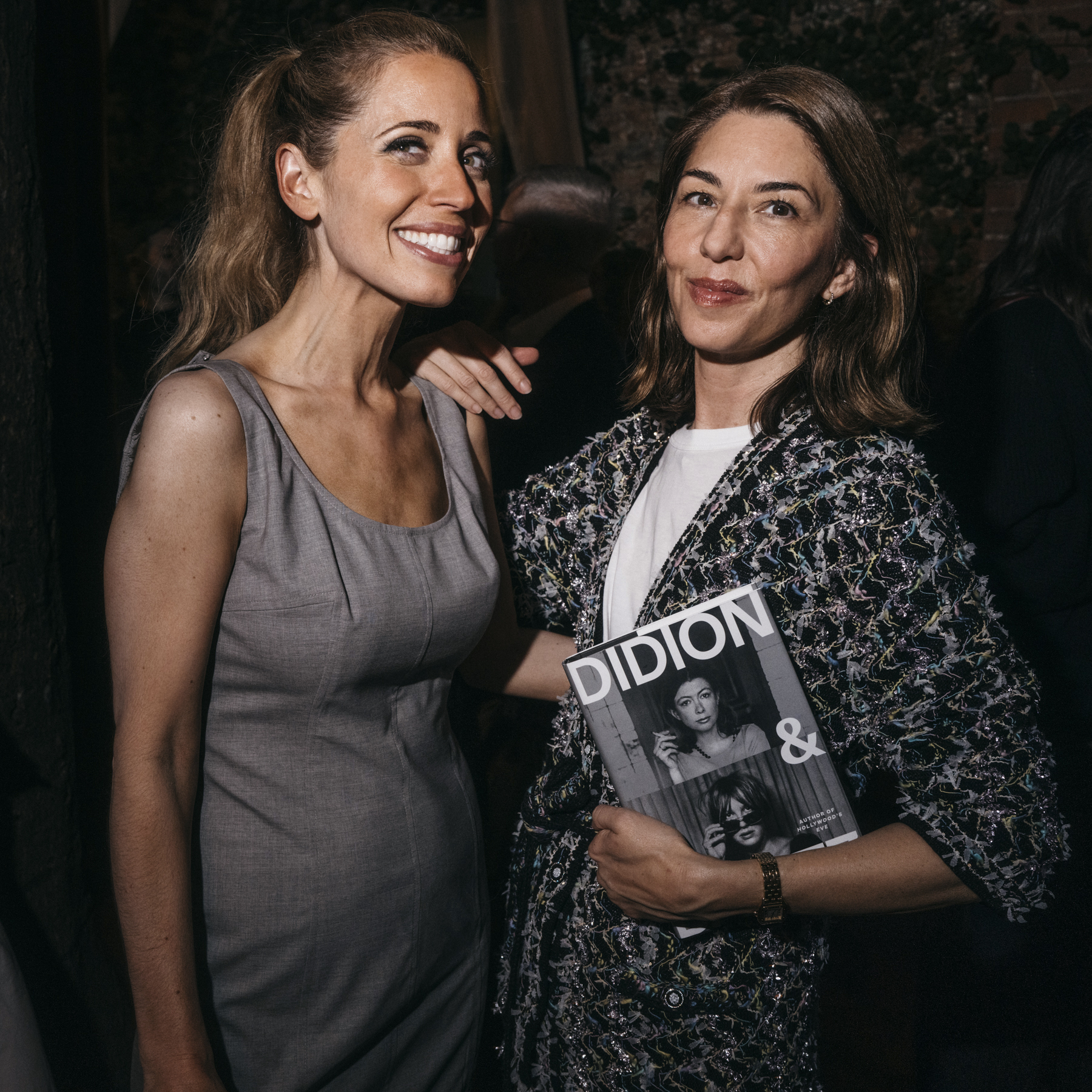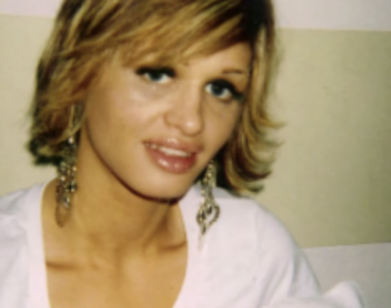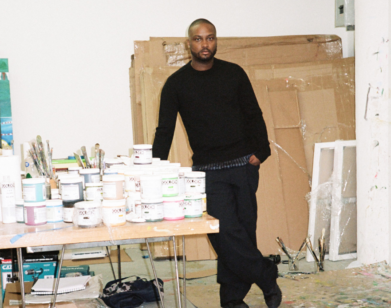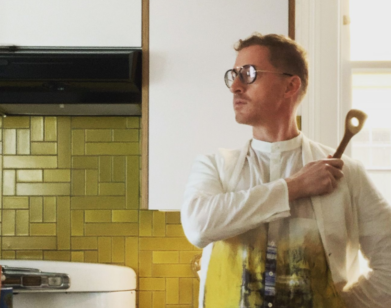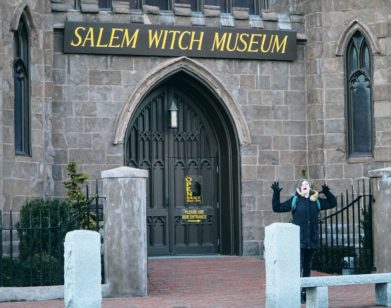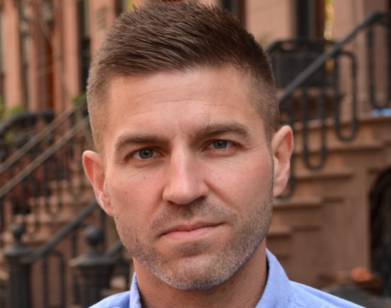WOMEN
Lili Anolik Takes Us Inside the Literary Rivalry Between Joan Didion and Eve Babitz
As soon as I started reading Lili Anolik’s addictively intriguing new book Didion & Babitz, I found that I couldn’t stop talking about it. Apparently, others couldn’t either, and when I’d mention it, they’d feel compelled to pick a side in this fascinating look at two writers who, in extremely different ways and differing prose styles, captured the Los Angeles scene of the 1970s. “I’m pro Babitz,” one writer told me. “I’m in the Didion camp,” said another. On one side of the ring you had the wild, messy, laidback spontaneity of Eve Babitz, the woman sitting nude across from Marcel Duchamp over a chessboard in the famous Julian Wasser photo. On the other is the tough, clear-eyed, and chilly precision of Joan Didion, shot standing in front of her Stingray Corvette in another of Wasser’s famous images. Anolik brilliantly uses these two legendary writers and their complicated lives to tell a story not only of what it means to capture a scene and stand in the center of a cultural moment, but also the arduous road of a female writer yearning to be taken seriously. Didion & Babitz is bound to raise the hackles of some Didion mega-fans, myself included, and one imagines the ensuing debates may even break up friendships. But it’s also an essential read, full of stories about two women living on the dangerous edge of a changing Los Angeles. A few days before the book’s publication, I spoke with Anolik in about upward and downward spirals in that golden city on the opposite side of the country.
———
CHRISTOPHER BOLLEN: Just to start, I loved this book so much.
LILI ANOLIK: I loved yours [The Destroyers]. Are you a [Patricia] Highsmith guy?
BOLLEN: For sure. I love Highsmith.
ANOLIK: What’s your favorite of the Ripley movies?
BOLLEN: Hands down, the [Anthony] Minghella. Nothing can touch it.
ANOLIK: I took my younger boy to see Purple Noon.
BOLLEN: That one kind of gets lost somewhere for me. Alain Delon is so beautiful and the film’s so stylish, but somehow the plot sort of feels like wet tissue paper. It falls apart.
ANOLIK: And I feel like he’s miscast. He should be Dickie.
BOLLEN: Absolutely. He’s the one who should be wanted. He’s the one you want to be.
ANOLIK: Beauty is its own aristocracy. That’s what I kept thinking.
BOLLEN: You’re making me want to watch the Minghella. I don’t think Highsmith as a writer always has the best style. She reaches her apex with The Talented Mr. Ripley for sure, but a lot of her other books really don’t have much rhythm to the sentences.
ANOLIK: It’s colorless for me. It’s not like reading Chandler.
BOLLEN: Colorless is actually the perfect word for it. Now we’re going to talk about two writers, Joan Didion and Eve Babitz, who had real style—very different but neither colorless. Didion was able to keep up that style really for her whole career. I have to warn you before we get started, Didion has been one of my literary obsessions. I’m thinking the same way Babitz might have been when you first read her.
ANOLIK: But Babitz is so tricky. For her to write Slow Days, Fast Company, it had to be the right guy, the right editor, just the right amount of coke. Her confidence had to be high, but she had to be a little self-hating. Everything had to align. Whereas if you’re a craftsperson like Joan, you can sustain at a much higher level. Even books that don’t catch fire, like Salvador or Miami, they’re still well-constructed and the prose is good.
BOLLEN: At the beginning of your book, you give a warning to the legions of adoring Didion fans. Don’t be a baby. In other words, don’t get offended if Joan doesn’t come across in the most positive light. I’m wondering, have you received any negative reactions so far from her camp?
ANOLIK: I know they’re mad at me. I got pretty close to Griffin [Dunne, Didion’s nephew by marriage]. We had lunch. He’s a charming person, and giving. I guess temperamentally, Joan and I are just not a good match. I mean, I can respect her and admire her, but she’s not my go-to. But when I include that warning, it’s the things I actually love about her that could be considered unappealing. I love the ruthlessness. I love the ambition, the toughness, the coldness. I like all those things about her. Her commitment was total.
BOLLEN: I interviewed Joan in 2001 and, believe it or not, at that time she was having something of a fallow period in her career. Older readers knew her, and she was beloved by them, but my generation really hadn’t found her novels and essays. That’s hard to believe now. But reading your book, I kept thinking about how volatile writing careers are, how easily a writer can fade and be forgotten.
ANOLIK: Eve really had her moment in the ’70s but she never quite caught on, and by 2001 she was about to go over the cliff. In the ’70s, she really was full-throttle on the scene. But I also know that Eve thought about Joan a lot more than Joan thought about Eve, at least in those later years. I’m sure in Joan’s mind, she just thought of Eve as a ’70s casualty. Fucked up, drugged out. Didn’t survive the decade with her energy and vitality intact. And Joan was competitive. I’m sure Eve was just somebody she left in the dust.
BOLLEN: Meanwhile, with The Year of Magical Thinking, Joan was able to rise from the ashes and become a cultural phenomenon once again.
ANOLIK: She gets even bigger. I always thought it was amazing that David Thomson, who writes about movies, was staying with Sonny Mehta [the late publisher of Knopf]. Sonny tells him he received a draft of A Year of Magical Thinking, and then he gets a call early in the next morning from Joan, “Have you read it? Will it be a bestseller?” That’s her ambition in play.
BOLLEN: You’ve waded through the subject of Eve for many years. I love your dogged persistence when you describe sitting on the steps of her house after your first meeting with her in 2012—after flying yourself all the way out to L.A to meet her for lunch—thinking you’d failed. I think most of us even dogged writers would have given up. But you kept going. How did you realize there was a second book in you exploring Eve’s life?
ANOLIK: Chris, I was just so pathetic at that point in 2012. It was my early thirties. I was nowhere. My personal life was fine, but my professional life was a joke, so I could take endless abuse. I had no claims on my time so I was happy to chase her for years. What had happened was I’d written a book on Eve that came out in 2019 [Hollywood’s Eve: Eve Babitz and the Secret History of L.A.]. I’d moved on to other shit, you know? I did a long-form podcast on a porn actress from the ’80s. I’d done “Once Upon a Time… At Bennington College,” a podcast about the Bennington class of ’86 that started as an Esquire piece and became a long-form podcast on Brett Easton Ellis, Donna Tartt and Jonathan Lethem. I was supposed to do that as a book for Scribner, but I really had moved on. And then Eve dies, and there are these boxes she’s kept. She lived in such crazy, crazy chaos, and the idea that she would have preserved letters was totally out of the question. And of course, she hadn’t. Her mom had wrapped up these boxes and I think duct-taped them in such a way that you couldn’t just pull it apart.
BOLLEN: It wasn’t easy access.
ANOLIK: Because if it had been, she would’ve strewn it everywhere. She just couldn’t help herself. The boxes were packed probably in 2000 when Eve moved. But you cut them open and it had everything you could want. It was like a dream scenario. It was manuscripts, photographs, her collages, and all these letters. The letters turned out to be an even more special subset, because it’s letters she received, and ones she wrote but didn’t send to people. Janet Malcolm’s a real sweet spot for me, and I remember her writing about unsent letters in her Sylvia Plath book [The Silent Woman: Sylvia Path and Ted Hughes]. It’s a genre of the unsent letter, a letter that you write and you think is so important and so revealing that you cannot send it to somebody. And Eve was actually quite private. She seems like a candid person, but she would never complain. I think that was against her style, against her code, so she would never tell you when she’d faced difficulty. She wouldn’t do it. So these letters really form a diary and they’re extra revealing.
BOLLEN: This book tackles the touchiest parts in being a writer: the distinction between one’s writing life, or the life of the page, and the writer’s personal life as a social animal. But Joan and Eve had amazingly rich lives, no question. Joan was an observer. Eve seems to be living frantically in the moment. Do you think part of her crazy lifestyle as a groupie was a way of gathering material?
ANOLIK: One is an improviser, one is a craftsperson. In every way, they’re opposites. I guess where the women are so similar is in their complete commitment to being artists or writers. They just go about it in opposite ways. Joan knew she had to be on the scene. She needed access, but stayed at a distance. Eve, for whatever reason, felt that she had to do it all. She was going to absorb the experience and then she was going to write about it. Because she was really disciplined about writing. She actually went to bed early, which sounds so crazy. Michael Elias said he hated to go to parties with Eve because she wanted to get there too early and leave too soon because she liked to get up in the morning and write.
BOLLEN: Paul Ruscha [brother of Ed] mentions getting kicked out of her bed in the morning so she could start writing. How did she manage with the hangovers?
ANOLIK: I feel like she’s a medical marvel. That Troubadour scene was hardcore. Talking in terms of the drugs, Mirandi [Babitz’s sister], who was in a lot of the rock and roll scenes with Eve, said: “I’d have to duck out. Not many women could withstand it. I’d be physically falling apart.” But she said Eve just never did. Iron constitution, baby.
BOLLEN: I was really intrigued about your idea in the book that both writers are writing about Los Angeles. But while Joan is writing about California for elite New Yorkers, Eve was writing Los Angeles as a Los Angelino trying to defend it.
ANOLIK: That’s exactly right. It’s like that letter Eve wrote to Joan in 1972 in which she says, “Could you write what you write if you weren’t so tiny, Joan?” She’s really lambasting Joan for the piece she wrote about the women’s movement for The New York Times. She’s accusing her of being a sellout on women. And the focus of her anger is Joan’s refusal to read Virginia Woolf. She said, “You don’t want to be like the women sogging around in The Waves. You want to write sharp, accurate things like a journalist, like Hemingway.” I think she felt that she sold out women to get in good with men, and I would never fault Joan for this. Joan’s born in 1934. It was just rougher on women, and there was kind of going to be room for one woman in the boys’ club and Joan managed to get in there and be taken seriously. She was the exception. It’s because she was so good, but she also had male values in a certain way. She took Hemingway as her model. Eve’s artistic model is Marilyn Monroe. If you pick Marilyn Monroe as your model, what you’re saying is you are going to be a serious artist, but you are going to be treated as a bimbo and you are not going to be taken seriously. Eve seemed to accept that and embrace it. And Joan just tried to slink around it.
BOLLEN: When I interviewed Joan, I asked her if she had changed her mind on any of her essays and she said, “The one on the women’s movement.” So I think she did see the error of her ways in that regard. Joan is a tricky case, because she’s the ultimate essayist, but her personal essays are so veiled, you often feel like you don’t know her as you get to know her, which is part of their magic. But she did really celebrate tough women, the pioneer woman who would leave her dead baby on the side of the road and keep going west.
ANOLIK: She references the Donner party obsessively. But on the other hand, you had Eve, who said things that only a child would usually say to you. We were at a restaurant and this woman was trying to wave to her and she wouldn’t wave back. It was so awkward, and the woman was so embarrassed and said, “Eve, what is that?” And she said, “She’s my enemy.” Who talks that way? A little child talks that way. It was strange how she spoke about Joan. I remember Bret once saying that Joan had come to his aid when his then publisher dropped him over American Pyscho. And Eve looked at me and said, “Too many people died on her watch.” I mean, it struck me as so shocking for such a sensitive subject.
BOLLEN: Specifically in light of The Year of Magical Thinking and Blue Nights.
ANOLIK: I admire those last two books in terms of how sure Joan was in managing her career. She makes herself into a legend. She sentimentalizes herself in a way that the world wanted her to. It’s incredibly canny. But I regard those as dishonest books. It’s a book about John in which she’s not truthful about the marriage and their dynamic and how it was between them, in my opinion. And I certainly think the Quintana book is not an honest book about what was wrong with her. But what I’m so responsive to in both these women is that they’re the cats that walked alone. I mean, Joan is in the drag of a woman who’s a wife and a mother, but I think really what she was was a writer. She had the trappings, and Eve didn’t bother with the trappings, but somehow they were the same that way.
BOLLEN: When you were becoming close to Eve at the end of her life, did you feel like you were something of a lifeline?
ANOLIK: Definitely not. She really was gone. We would have these conversations and sometimes they could be incredible, but I never felt she totally registered me as a human. Her brain really was crumbling. I was very close with her sister and her cousin and boyfriends of hers, and that was my way of being close with her because she really was a posthumous Eve. She was technically alive, but emotionally she just wasn’t present. To be frank with you, she was a subject to me. I loved who she was as a kind of a cultural figure, and I loved who she was as a writer of books like Slow Days, Fast Company. But she was an exploitable thing to me. I wanted to write about her, so I didn’t think of myself as trying to bring her back or get her the attention. That would just be a by-product.
BOLLEN: I know in my own journalistic life, I sometimes confuse the purpose and start to become friends with the person I’m supposed to be more objective and professional about.
ANOLIK: Of course. It becomes personal. I was very close with the people in that world, and they would get angry at me for things I revealed sometimes, which was painful. I was going to do it anyway, but it would be painful for me because I did have personal feelings.
BOLLEN: And she was sort of a MAGA Republican at the end.
ANOLIK: She was. But it was so much more expressionistic and surreal than that. She thought she was having an affair with Trump. She’d conflated him in her mind with Ahmet Ertegun, and she would say things like how she wanted me to get her a shirt the color of Melania Trump’s eyes. It wasn’t really political. It was like theater and insanity.
BOLLEN: The third character in your book is arguably Los Angeles—how it both nurtures and betrays these two figures, particularly Eve. At one point, you acknowledge that maybe Joan and her husband’s relationship to Hollywood might have been healthier because Hollywood will end up tossing you aside. Did your relationship with L.A. change while writing this book?
ANOLIK: I lived in Los Angeles my first year out of college and I was thrilled to be there. I was working at a management company. It was Michael Ovitz’s post-Disney company called AMG. It’s a secret place with secret enclaves and you need the password to get in. The first time I ever felt like I got into L.A. that way was through Eve. I remember something that Mirandi said to me, how Eve was interested in Hollywood and when Joan went out to Malibu. She just thought Malibu was unbelievably square because it was the movie industry, which to her was like bourgeois 9 to 5. Mirandi said to me, “Hollywood to Eve meant the Sunset Strip all the way up to the Beverly Hills Hotel.” Even though it’s in Beverly Hills, it was part of the scene.
BOLLEN: I always find L.A. to have this strange mix of extreme nostalgia for the past and almost unbearable newness. But it’s the past that lures me in.
ANOLIK: I think that’s completely right. There’s also a weird hysteria to the place just because the weather is beautiful and bland. There’s a puny quality to the place. I remember Bret talking about L.A. from a few decades ago, he said, “It was a noir utopia. It was a tropical Berlin.”
BOLLEN: Wow.
ANOLIK: Isn’t that kind of great? And I felt like at least up until 2000, you could tap into those feelings.
BOLLEN: There’s a list of people you thank for speaking in your acknowledgements, including several members of Joan’s camp. Was there anyone who wouldn’t speak with you?
ANOLIK: Wayne Lawson wouldn’t talk. Lawson was Dominick Dunne’s editor at Vanity Fair. I wanted to ask him about editing that first piece on Dominique. I didn’t try for Harrison Ford. I figured he was going to be so irritated with me about certain stuff, so I preemptively just assumed he wouldn’t talk, even though it is mentioned in the book that he could have sex with nine people in a day, which is a huge tribute to his prowess.
BOLLEN: That fact has not left my brain since I read it.
ANOLIK: I never don’t look at him and think about that number. Nine people.
BOLLEN: I just want to say, the writing style of the book is beautiful. You have such a sharp, muscular style. It jumps right at you. It keeps up with these difficult figures. It never feels passive. Biographies rarely have such exciting prose. Did your voice come naturally when considering the subjects?
ANOLIK: It was obsessively worked over. I knew I had to get this right. I felt like I was taking on Joan in this book and that my arguments had to be tight. I was so into Janet Malcolm and Pauline Kael. Obviously, I read Joan and Eve pretty compulsively. I love Geoff Dyer. Essentially, I think of this as a nonfiction novel. I don’t really think of it as a biography. There is something embarrassing about biography. I mean, life is a dumpster. It’s a whole garbage dump of detail and minutiae, and you’re putting it in a sleek little book. The whole enterprise just seems suspect to me.
BOLLEN: You also point out in the book that Eve and Joan died within a week of each other in December 2021. Another strange coincidence. In the end, do you think the reason Eve’s career didn’t continue to soar is that it’s dangerous to be the “it girl” of a certain time? You get too embedded in a scene or a decade and no one wants to see you in the next one.
ANOLIK: Eve was so serious. She’d already written a full novel by 20 and almost got it published. And then, she was so serious about visual art. I feel that a multitude of talents is not helpful to a person because you need a single-minded focus. So I think Eve was diverted a bit in the beginning. She was an accomplished album cover designer. She would let herself be called a groupie piece of ass. She rather liked that. But she was always working so hard. It would irritate me when she called herself a groupie, because I feel like the end game of the groupie is to land the famous musician.
BOLLEN: Absolutely.
ANOLIK: But she didn’t want a boyfriend. Her cousin Laurie said, “She just wanted to exchange body fluids with them.” That’s it.
BOLLEN: Is it going to be hard for you to have a post-Eve existence? Do you have trouble letting go of subjects?
LANOLIK: I’m onto something. I’m working on something with Courtney Love and her grandmother, Paula Fox, which really helps because I think it would be really painful for me if I didn’t have a new love.
BOLLEN: It’s like you want to break up but instantly jump into a new, monogamous relationship.
ANOLIK: That’s how I am. The closest thing I ever got to a compliment from Courtney came through her sister. She said, “You kick Lili and she’ll stick around.”
BOLLEN: A backwards compliment.
ANOLIK: But if the subject is really worth it, I’m happy to endure the abuse.

